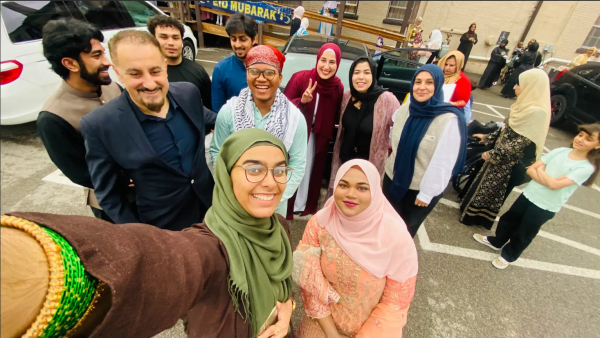7.2 earthquake strikes Haiti, kills at least 2,200
In late August, a 7.2 magintude earthquake struck 77 miles west of Haiti’s capital, Port-Au-Prince, and just over eight miles south-southeast of Petit Troup de Nippes, on the Enriquillo-Plantain Garden Fault Zone. Some of the cities impacted by the earthquake were Rampe, Fleurant, Camp-Perrin and Les Cayes.
The earthquake was felt across Hispaniola and the islands of Jamaica, Cuba and Puerto Rico, according to Reuters.
According to the U.S. Geological Survey, more than 1 million people were exposed to very strong or severe shaking levels.
This earthquake comes a little over a month since the July 7 assassination of President Jovenel Moïse and two months after the escalation in gang violence that affected 1.5 million people, displacing at least 19,000 in the metropolitan area of Port-au-Prince.
As a result of the increase in gang activity and the impact of natural disasters, 4.4 million people, or 46% of the Haitian population face acute food insecurity.
The Civil Protection Agency in Haiti stated that the death toll from the earthquake was 2,207.
According to the agency, 12,268 people were injured by the earthquake. 40% of the 1.6 million people, who live in the impacted regions, are in desperate need for emergency humanitarian assistance.
Jean-Wickens Merone, a spokesman with World Vision Haiti made a statement that was published in NPR.
“We’re concerned that this earthquake is just one more crisis on top of what the country is already facing — including the worsening political stalemate after the president’s assassination, COVID and food insecurity,” Merone stated.
Prime Minister Ariel Henry spoke about this inconvenience in a news conference following the earthquake and declared a state of emergency.
“When it comes to medical needs, this is our biggest urgency,” Henry said. “We have started to send medications and medical personnel to the facilities that are affected. For the people who need urgent special care, we have evacuated a certain number of them, and we will evacuate some more today and tomorrow.”
Since this region of Haiti is so impoverished, response efforts are hindered. The hospitals that are accepting individuals affected by the earthquake are filled with patients, including the Hospital Saint Antoine in the southern city of Jeremie.
“There are a lot of people coming in — a lot of people,” a hospital administrator said. “We don’t have enough supplies.”
Because of the lack of room in the hospital, tents have been set up in the courtyard outside of the hospital.
Following the earthquake, initial damage reports suggested that the damage in the capital of the country was not as devastating as was seen in the earthquake in 2010.
The 2010 earthquake killed approximately 200,000-300,000 people, striking only 15 miles west of Port-au-Prince.
However, it was reported that the 2021 earthquake was two times more powerful than the one that took place in 2010.
Nearly 53,000 homes were destroyed and more than 77,000 others sustained damage.
Most of the multi-family or commercial buildings are concrete construction that are not designed to endure powerful earthquakes. In fact, 82% of single-family homes are made of materials such as sheet metal roofs, with walls of brick, concrete or stone.
Because of this, the buildings in Haiti are incredibly vulnerable to devastation from strong earthquakes.
In response to the earthquake, American Red Cross spokeswoman, Katie Wilkes made a statement.
“There are reports of significant damage to homes, roads and infrastructure,” Wilkes said.
Thousands of Haitian citizens spent the days following the earthquake digging through the rubble for loved ones, searching for missing belongings and hunting for shelter after entire towns had been destroyed by the quake.
But support is coming from other countries, including the United States.
In a press conference, U.S. President Joe Biden stated that he was “saddened by the devastating earthquake that occurred in Saint-Louis du Sud Haiti, this morning.”
“We send our deepest condolences to all those who lost a loved one or saw their homes and businesses destroyed,” the President continued, “I have authorized an immediate U.S. response and named United States Agency for International Development Administrator Samantha Power as the senior U.S. official to coordinate this effort.
Countries in South America, including Argentina, Peru, Ecuador and Venezuela also sent their aid to the country.
Gabriella Brady is a junior from Pittsburgh, Pennsylvania. She is a Biology and Neuroscience double major and German minor. This is her second year on...







